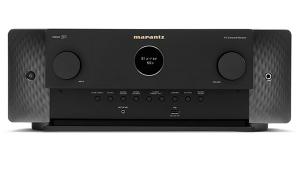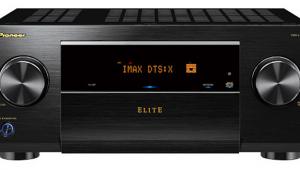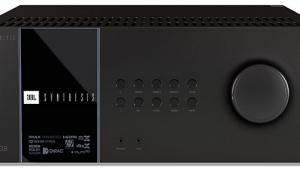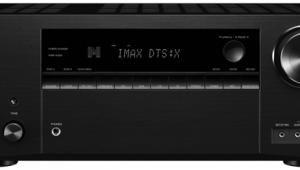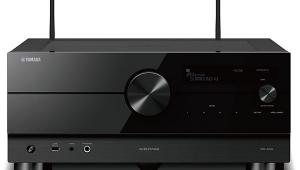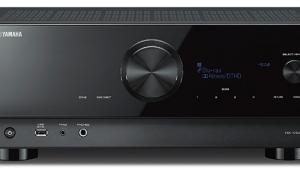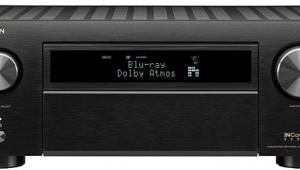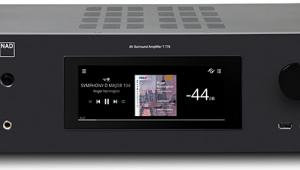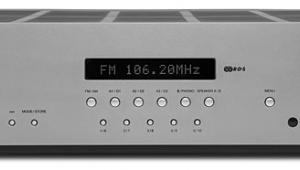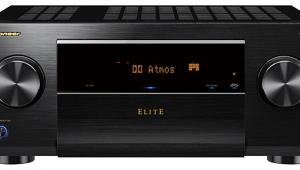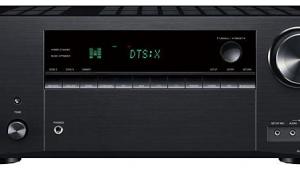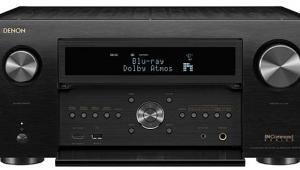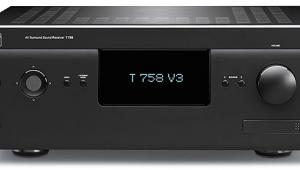Pioneer VSX-1124 AV Receiver Test Bench

| 0.1% THD | 1.0% THD | |
| 2 Channels Continuously Driven, 8 Ohm Loads | 117.4 watts | 136.7 watts |
| 5 Channels Continuously Driven, 8 Ohm Loads | 73.7 watts | 94.9 watts |
| 7 Channels Continuously Driven, 8 Ohm Loads | 68.3 watts | 83.0 watts |
Analog frequency response in Pure Direct mode:
–0.15 dB at 10 Hz
–0.04 dB at 20 Hz
–0.14 dB at 20 kHz
–3.30 dB at 50 kHz
Analog frequency response with signal processing:
–0.88 dB at 10 Hz
–0.26 dB at 20 Hz
–0.16 dB at 20 kHz
–17.26 dB at 50 kHz
The graph above shows that the VSX-1124-k’s left channel, from CD input to speaker output with two channels driving 8-ohm loads, reaches 0.1% distortion at 117.4 watts and 1% distortion at 136.7 watts. Into 4 ohms, the amplifier reaches 0.1% distortion at 125.3 watts and 1% distortion at 167.8 watts.
There was no multichannel input to measure. THD+N from the CD input to the speaker output was less than 0.062% at 1 kHz when driving 2.83 volts into an 8-ohm load. Crosstalk at 1 kHz driving 2.83 volts into an 8-ohm load was –78.72 dB left to right and –79.65 dB right to left. The signal-to-noise ratio with an 8-ohm load from 10 Hz to 24 kHz with “A” weighting was –108.91 dBrA.
From the Dolby Digital input to the loudspeaker output, the left channel measures –0.14 dB at 20 Hz and –0.30 dB at 20 kHz. The center channel measures –0.01 dB at 20 Hz and –0.30 dB at 20 kHz, and the left surround channel measures –0.01 dB at 20 Hz and –0.30 dB at 20 kHz. From the Dolby Digital input to the line-level output, the LFE channel is +0.02 dB at 20 Hz when referenced to the level at 40 Hz and reaches the upper 3-dB down point at 117 Hz and the upper 6-dB down point at 120 Hz. —Mark. J. Peterson

Video
The Pioneer sailed through all of our 1080p-input-to-1080p-output video tests (clipping and resolution). However, its upconversion was subpar. This was most evident in the 3:2 SD and MA SD tests. On real program material (as contrasted to our special test patterns, which showed some moire on the 3:2 HD tests), problems in the Pioneer AVR’s 3:2 HD upconversion (1080i to 1080p) proved difficult to spot. But on close viewing of fast-motion 480i SD film-based material, jaggies and stuttering were quite visible. The tests indicated that the problem was in the deinterlacing step (480i to 480p), not the scaling (480p to 1080p). If your sources or display offer good upconversion, we recommend doing the upconversion there and turning the Pioneer’s video conversion off&mash;for a direct passthrough. (In comparison, the Oppo BDP-105D used in the tests upconverted cleanly.) —Tom Norton
